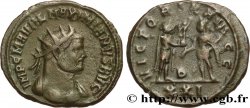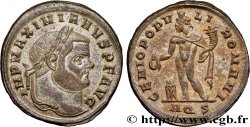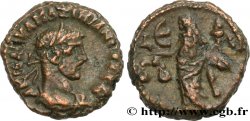brm_899917 - MAXIMIANUS HERCULIUS Follis ou nummus
180.00 €(Approx. 187.20$ | 149.40£)
Quantity
Add to your cart

Type : Follis ou nummus
Date: 300-301
Mint name / Town : Antioche
Metal : copper
Diameter : 26 mm
Orientation dies : 6 h.
Weight : 10,78 g.
Rarity : R1
Officine: 3e
Coments on the condition:
Exemplaire sur un flan très large, parfaitement centré des deux côtés avec les grènetis complets. Très beau portrait. Revers de style fin bien venu à la frappe. Jolie patine marron glacé avec des reflets métalliques
Obverse
Obverse legend : IMP C M A MAXIMIANVS P F AVG.
Obverse description : Tête laurée de Maximien Hercule à droite (O*).
Obverse translation : “Imperator Cæsar Marcus Aurelius Maximianus Pius Felix Augustus”, (L’empereur césar Marc Aurèle Maximien pieux heureux auguste).
Reverse
Reverse legend : GENIO POPV-LI ROMANI/ K|(GAMMA)/ V// ANT.
Reverse description : Genius (le Génie) debout à gauche, coiffé du modius, le manteau sur l'épaule gauche, tenant une patère de la main droite dont le liquide se déverse et une corne d'abondance de la gauche.
Reverse translation : “Genio Populi Romani”, (Au Génie du Peuple romain).
Commentary
Avec son argenture superficielle. Rubans de type 1.








 Report a mistake
Report a mistake Print the page
Print the page Share my selection
Share my selection Ask a question
Ask a question Consign / sell
Consign / sell
 Full data
Full data









